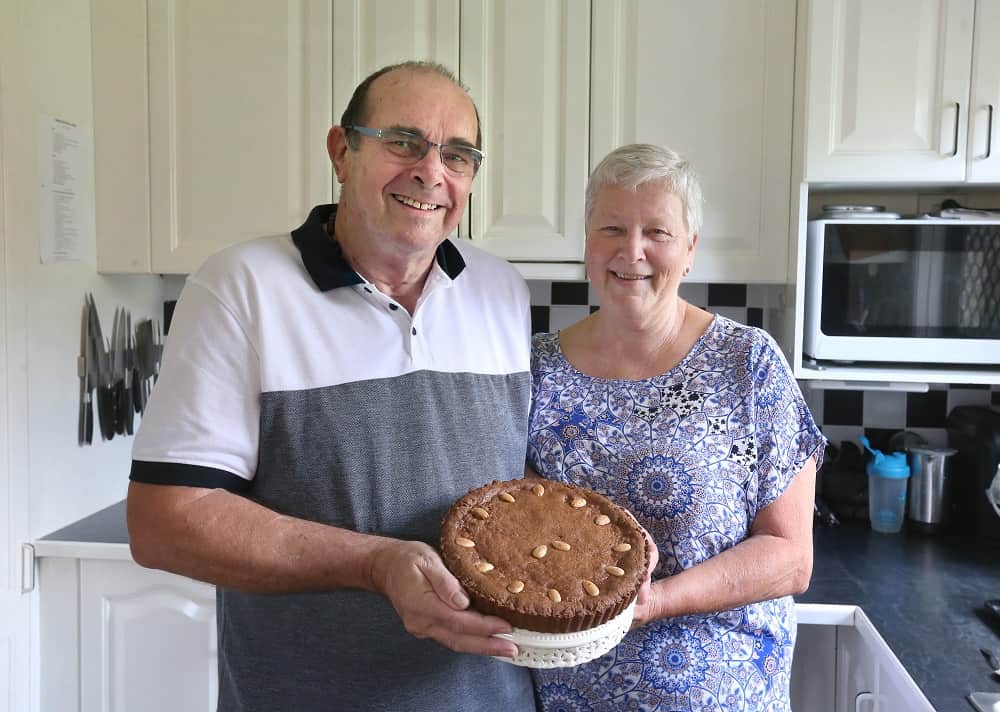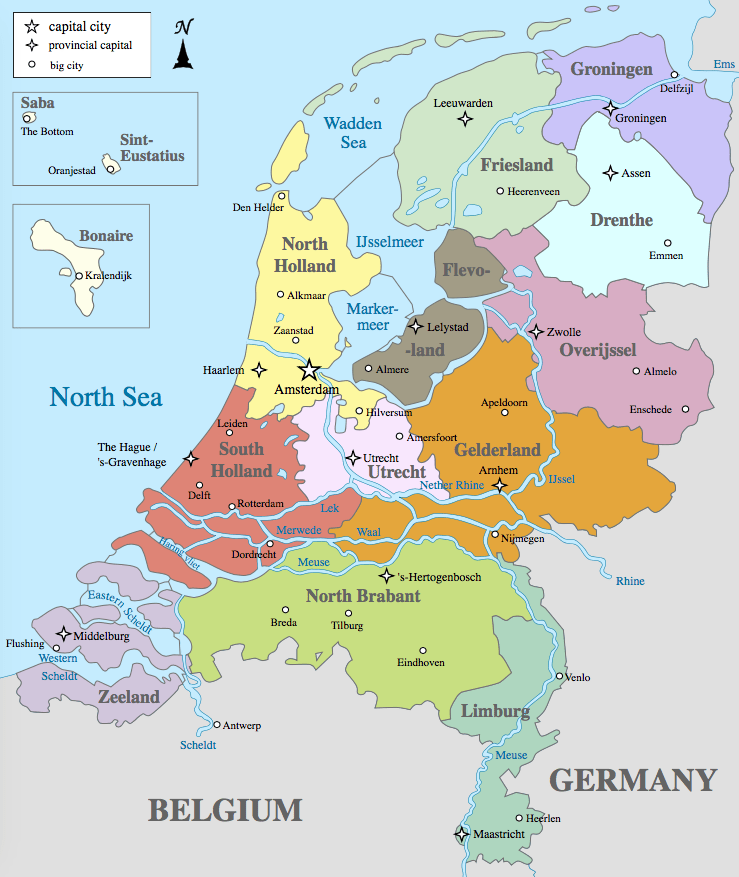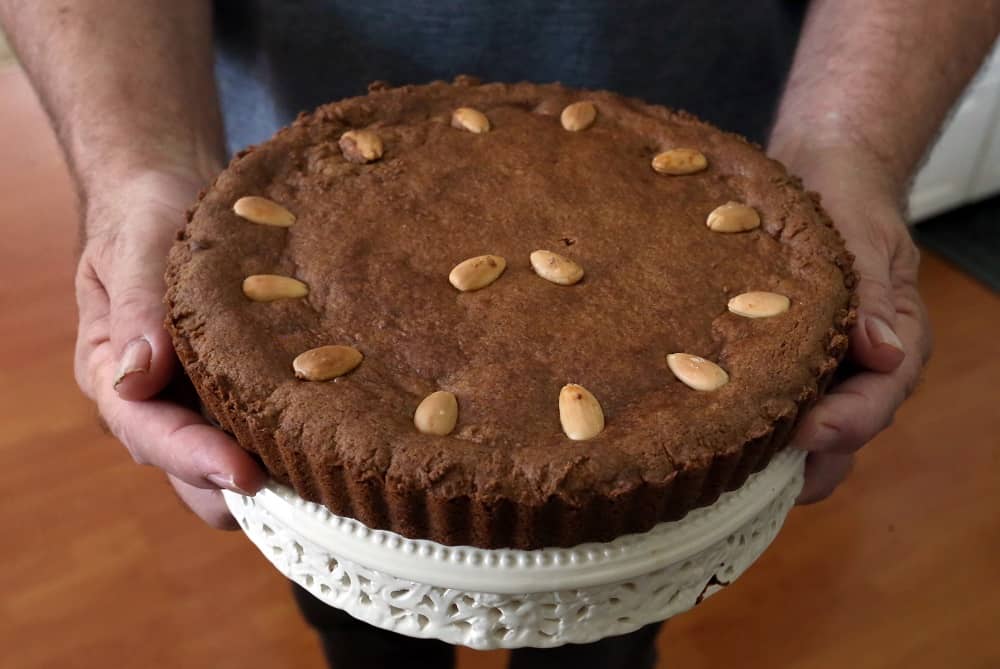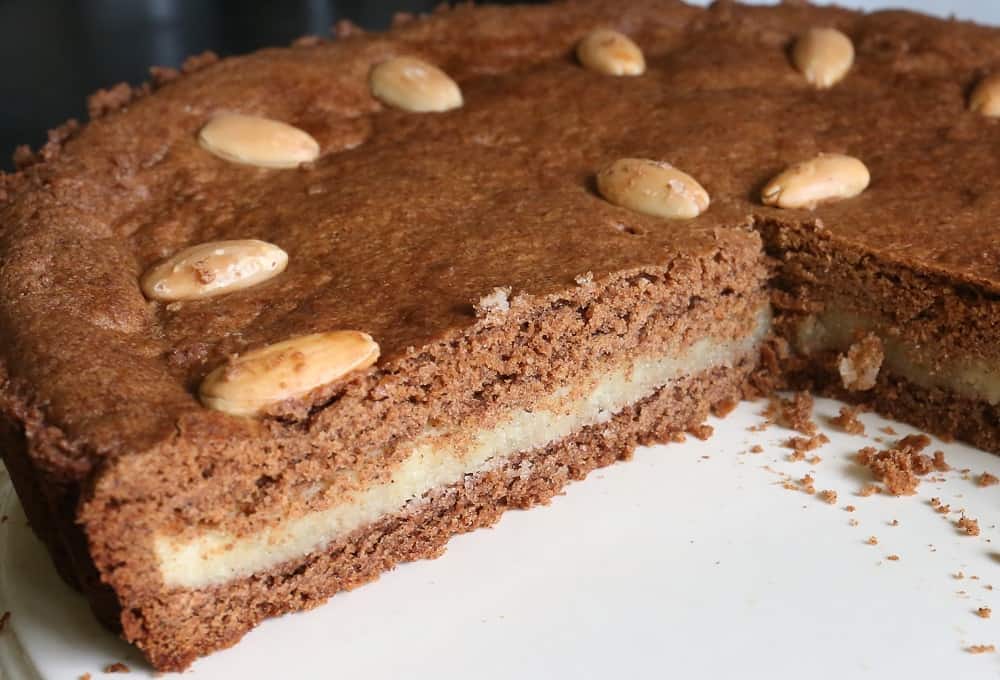
It’s the smell.
A cinnamon spice mix wafting from the warm cake.
Sitting around the family kitchen table, Leo Van der Meer leans over the freshly baked Speculaaskruiden and inhales.
A traditional Dutch spice cake, the Speculaaskruiden smells like all of your favourite spices all at once.
“That smell triggers it all,” Leo said.
“The smell triggers my childhood memories of St Nicholas Day.”
St Nicholas Day
Leo was born in Den Haag (The Hague) in the Netherlands.
On December 4 every year, Leo would place his clogs next to his bed and line them up neatly.
For tomorrow would be St Nicholas Day when presents would be exchanged, wooden clogs would be filled with candy and the day would be spent together with family eating traditional food.
On 5 December every year, Leo’s eyes would fly open and the first thing he would see was icicles.
“It would freezing cold and icicles would form on the ceiling in my bedroom,” he said.
Then he would be hit by that smell. He would run to the warm kitchen where the wood burner stoves would already be lit.
“It was a huge celebration, people came over and everyone would be in the kitchen,” he said.
“In the Netherlands, everybody congregates in the kitchen as that is where the wood burner stoves are and it’s warm.
“The food was prepared by everyone, it was a family event. It was a day for everyone to be together the atmosphere was great.
“We would get our presents (rather than on Christmas Day) on Sinterklaas (St Nicholas Day) and my wooden shoes would be filled with borstplaat (a traditional Dutch candy).
“My family going back generations were shipwrights, sea captains and sailors.”
Saint Nicholas was the patron saint of sailors and his reputation was for giving secret gifts which gave rise to the traditional model of Santa Claus.
Leo explains that before the 5th of December was celebrated as St Nicholas Day, it was Odin, a god among the Germanic tribes, who the people celebrated.
“Twelve-hundred years ago the Catholic Church came to the Netherlands, they realised they couldn’t stop the people getting together to celebrate Odin, so they just changed it to celebrate St Nicholas instead,” Leo said.
Vegemite is not like chocolate
Sitting around Leo’s kitchen table in Churchill, life couldn’t be more different for him now, than the childhood he describes.

Fact file
With 17 million people and a population density of 488 people per km2, the Netherlands is the most densely populated country of the European Union and one of the mostly densely populated countries in the world. The total size of the Netherlands is 41,500 km2. Amsterdam is the capital, but the government resides in The Hague.
The Netherlands is located in Northwestern Europe. The country shares a border with Germany in the East and Belgium in the South. The West and North are the Dutch coast and are delimited by the North Sea.
The euro is the official currency.
The Netherlands are famous for their windmills, pumping stations, dikes, polder, waterways and canals. Tulips and cheese are also iconic to this region.
Flood control is an important issue for the Netherlands. A quarter of the country is below sea level. Two thirds of its area is vulnerable to flooding.
From the 16th century on they used windmills to drain lakes using the reclaimed land for habitation and agriculture. From the 11th century they built dikes to protect silt deposits along the coast.
The Kingdom of the Netherlands was established in 1815, and King William I was its first ruler and he was from the House of Orange-Nassau.
The current king is His Majesty King Willem-Alexander. He is married and has three daughters.
Born in 1950, Leo’s parents were pig farmers. In the Netherlands that meant his family lived in the city but the farm was out in the country. They also had two jobs each.
Pig farming was getting harder and his parents wanted a better life for their children so when Leo was nine years old they landed in Plumpton (now Mount Druitt) in NSW.
“When I first tried vegemite, I thought it was a lump of chocolate. I have never tried it again,” Leo said.
The family found work and lived on a pig farm that had 500 pigs.
“It was a bit of a culture shock for my mother, who was from a big city. Now we were in the middle of nowhere, spoke little English and knew no one,” Leo said.
The immigrants wanted to fit into their new country as quickly as possible.
“It was decided that only English would be spoken and they never spoke Dutch again,” Leo said.
A golden moment
Leo was attending a wedding of a friend when he was approached by Cathy.
“He had a Sergeant Pepper’s album under his arm and he was standing near the beer keg. I wanted him to play that album so I started up a conversation,” Cathy said.
They have been married for 50 years and as it turns out, Cathy is also from the Netherlands.
“But I left when I was small and I don’t remember it,” she said.
Chasing the sun
Leo and Cathy were living in the Blue Mountains when they came up to Ipswich to visit their son, Michael, who was in the army and based here.
“The sky was just so blue. The weather was perfect, so we decided to move,” Leo said.
“I had been working in a food processing plant down south so I walked into McMahon’s Soft Drinks and there was a job going. I worked there as a fitter and turner for years and ended up working for six different employers at that factory.”
Settled and satisfied
Now retired, Leo reminisces about a recent trip back to the Netherlands.
“I was home. I felt it right away. I stepped foot off the plane and walking up the cobbled street I thought, ’I could live here,” Leo said.
“I’m really proud of what I am and I love sharing my heritage with anyone who will listen.
“I am happy here though. We are probably more Australian than the average Australian now.
“A lot of tradition gets lost because you are busy living your life in this country and you don’t want your kids to be the odd one out.
“So we just go with the flow.”

Recipe
Gevulde Speculaas (Almond filled spice cake)
Ingredients:
For the dough
2 cups self-raising flour
2 tablespoons speculaas spices *
1 cup brown sugar, packed
Pinch of salt
142g of butter
2 tablespoons milk
1 egg yolk
For the Filling
1 cup almonds, whole
1 cup icing sugar, packed
1 egg, separated
1 tablespoon of almond flavouring
*Speculaaskruiden (A traditional spice mix)
8 teaspoons cinnamon
2 teaspoons ground cloves
2 teaspoons grated nutmeg
1 teaspoon ground coriander seeds
1 teaspoon ground aniseed
1 teaspoon ground ginger
1 teaspoon white pepper
¾ teaspoon ground cardamom
Put all the ingredients together and stir well. Store this spice blend in an airtight container for up to six months.

Method:
Pour two cups of boiling water over the almonds and let them sit for fifteen minutes. Rinse the nuts with cold water, and slip off the brown skin.
Save twelve half almonds for decorating.
Put the almonds in a blender and pulse several times until they have a wet sand consistency. Place the almond meal in a blow, stir in sugar, egg white and almond extract. It should be a creamy spreadable consistency. If not, add in a little bit of the yolk (beat it first) at a time until you do. Refrigerate until ready to use.
Mix the flour, the speculaas spices, the sugar and salt. Cut in the butter with two knives until the butter is reduced to pebbles and the flour feels like wet sand. Add the milk and the egg yolk, knead the dough until it comes together. Pat into ball, wrap in plastic film and refrigerate for several hours, preferably overnight.
Divide the dough in two parts. Grease a nine inch pie pan or springform and roll outthe first dough. Cover the bottom and the sides of the pan. Spread the almond paste over the dough, roll out the second dough and cover the filling and the edges of the pie form.
Brush with the remaining egg yolk, place the 12 almond halves on the pie and bake at 160 degrees Celsius until done (about half an hour). Let it cool before taking it out of the spring form, then carefully slice into 12 pieces and serve.
Difference between Holland and the Netherlands and why they are Dutch
The official name of the country is the Kingdom of the Netherlands. Holland actually only means the two provinces of Noord-Holland and Zuid-Holland. However, the name Holland is often used when all of the Netherlands is meant.
Between 1588 and 1795, the area currently representing the Netherlands was the Republic of Seven United Netherlands. The republic was conquered by French troops in 1795 and became the Batavian Republic.
Napoleon appointed his brother Louis as king in 1806, turning the country into a kingdom. The Netherlands remained a kingdom after Napoleon’s defeat. At that time, the area called “Holland” made the biggest contribution to the entire nation’s economy and wealth. As such it became the commonly used name to indicate the entire country.
Dutch was the word used to describe people from both the Netherlands and Germany. Back in the 1500s the Netherlands and part of Germany, along with Belgium and Luxembourg were all part of the Holy Roman Empire.
High Dutch referred to people from the mountainous area that is now southern Germany and Low Dutch was the area in the flatlands that is now known as the Netherlands.



5